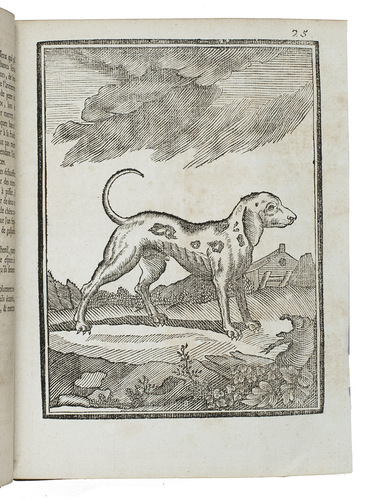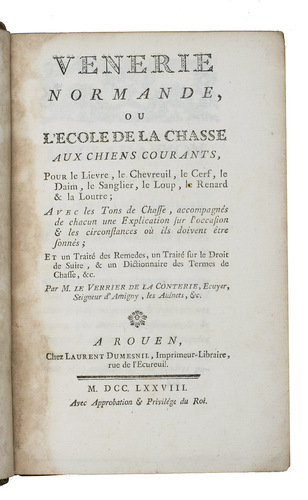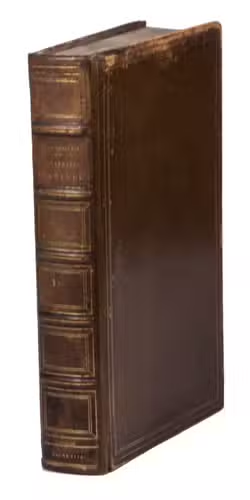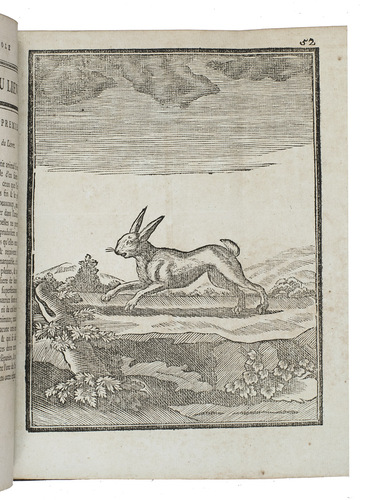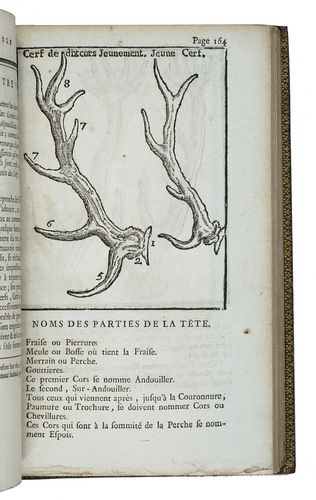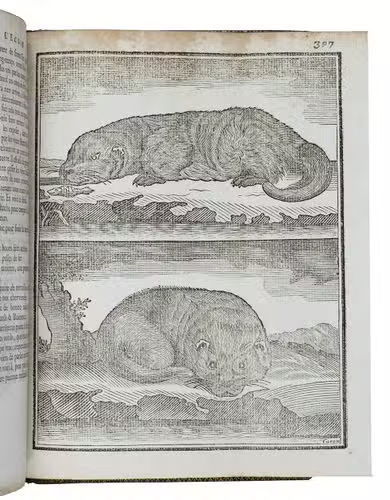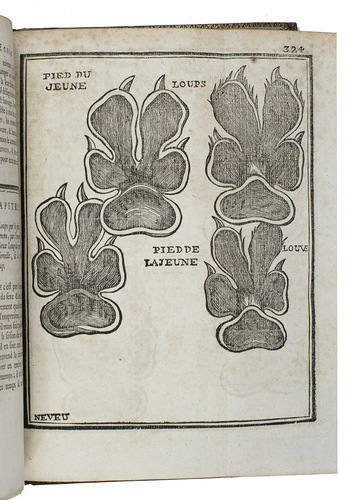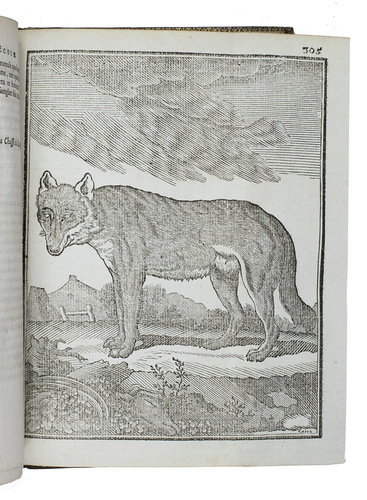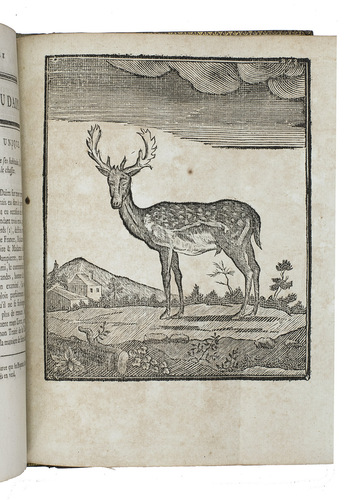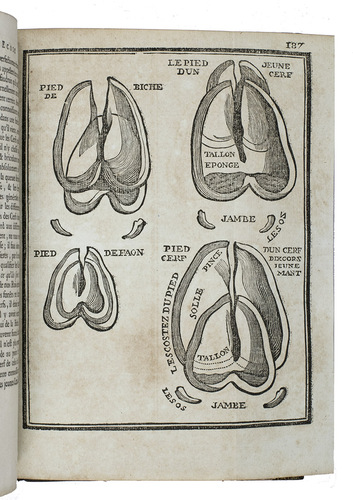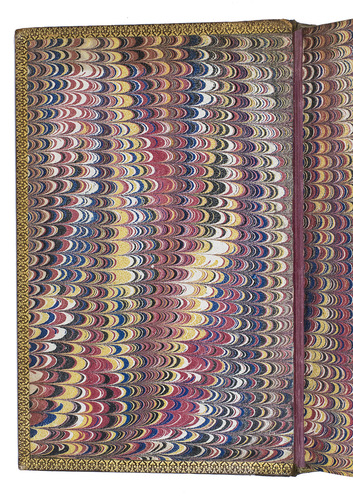LE VERRIER DE LA CONTERIE, Jean-Baptiste-Jacques.
Venerie normande, ou l'ecole de la chasse aux chiens courants, pour le lievre, le chevreuil, le cerf, le daim, le sanglier, le loup, le renard & la loutre; Avec les tons de chasse, accompagnés de chacun une explication sur l'occasion & les circonstances où ils doivent être sonnés; Et un traité des remedes, un traité sur le droit de suite, & un dictionnaire des termes de chasse, &c.
Rouen, Laurent Dumesnil, 1778. 8vo. With 27 woodcuts on 19 leaves and a complete engraved quire of 14 pages, printed both sides with mensural music for hunting calls and fanfares, with explanatory text. Gold-tooled tan calf (ca. 1850?), signed at the foot of the spine by "Koehler" (François Koehler in Paris). XV, [1], 526 pp. (omitting the blank leaf, pp. 447-448).
€ 1,500
One of the most important French works on hunting, richly illustrated with woodcuts and also containing a complete quire of hunting tones, written by the French hunting specialist Jean-Baptiste-Jacques Le Verrier de la Conterie (1718-1783). In this classic on hunting, Le Verrier describes hunting hares, deers, wild boars, wolves, foxes and otters by using hunting dogs. He also discusses canine health, shows studies of hooves and footprints and provides the reader a dictionary of hunting terms at the end of the work. In addition, the work includes a completely engraved quire with hunting tones, including explanations under which circumstances the different hunting tones should be used.
Venerie normande was first published in 1763 under the title Lécole de la chasse. The present second edition was considerably enlarged to make the authors definitive edition, including three new woodcuts (hare, dog and deer). The remaining woodcuts were the same as those used for the first edition. A German edition appeared in 1780. Although the present second edition is more common than the first, it is considered to be more complete (Souhart) and also much more important than the first ("supérieur comme intérêt", Thiebaud). The work was revived in new editions beginning in 1845, mostly with the 1763 title. Our copy was bound by the bookbinder and finisher François Koehler, a "first-class binder" (Ramsden) active in Paris from 1834 to 1858.
Lacking the blank leaf Ee8 (pp. 447-448), as usual (Ee7v ends with "fin" at the foot and the index also skips pp. 447-448), and the final blank leaf Kk8. With a brown stain in the gutter margin of the first quire, occasional minor foxing or slight browning in the text leaves and plates. Binding slightly rubbed, mostly at the head of the boards. Overall in good condition and nearly untrimmed, preserving many deckles at the foot and many of the printers point holes on the fore-edge. Brunet III, 1036; Jeanson 1285; Schwerdt I, p. 313; Souhart, pp. 299-300 ("Fort belle edition, plus commune mais plus complete que la première"); Thiebaud, col. 589-590 ("Cette deuxième edition, ...., est bien supérieure comme intérêt à la premiere"). For the binder: Ramsden, French bookbinders 1789-1848, p. 113; https://data.bnf.fr/fr/16619746/francois_koehler/.
Related Subjects:











